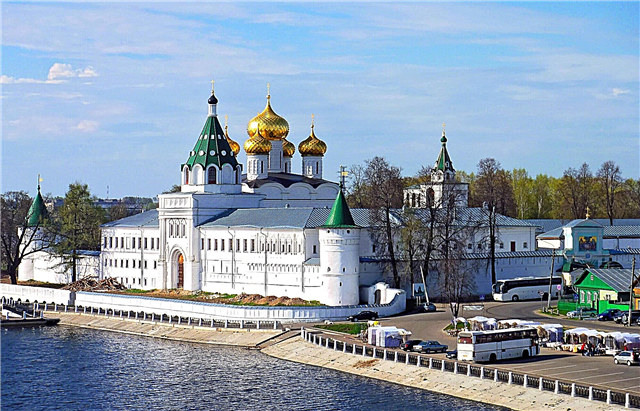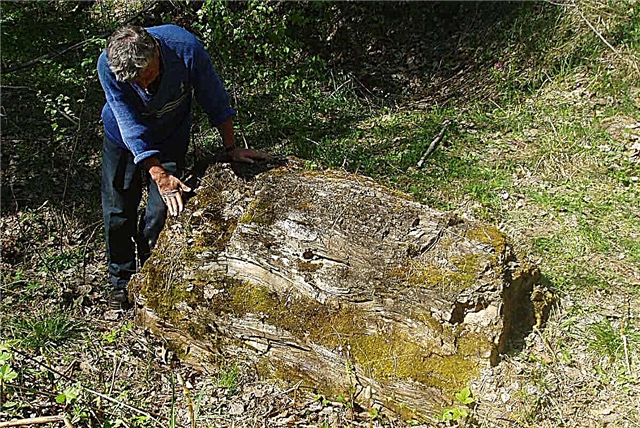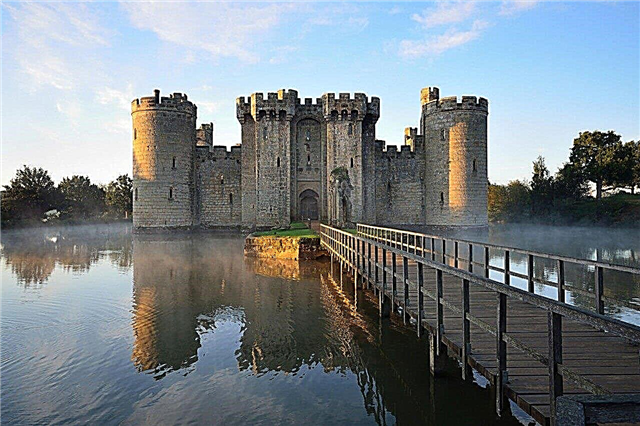England keeps its own traditions and cultural values. In addition, its remoteness from the mainland allowed it to avoid direct invasion during World War II and some other military conflicts. The combination of these and other factors is a guarantee of the preservation of ancient buildings, to which the tourist trail is not overgrown now. Castles are scattered almost throughout the country. They reflect the era and represent different styles.
Historical events, famous personalities and amazing legends are associated with almost every one. Travelers are offered to see the splendor of the stately buildings and immerse themselves in the atmosphere of their past and present life. Among the excursions there are both separate visits to towers and castles, and complex tours that allow you to compare attractions with each other.
The most interesting ancient castles in England
List, photo with titles and descriptions.
Tower of London
Stands on the banks of the Thames. Founded in 1066. One of the symbols of the British capital. He managed to change many appointments in his history: a fortress, a palace, a prison, a storehouse of valuables, an arsenal. Now it is a museum. Guards have been guarding the Tower since its construction. In modern times, on the occasion of the holidays, they wear a dress uniform in the colors of the ruling dynasty. The castle is associated with a legend about crows, which are specially taken care of: supposedly their disappearance is a harbinger of the fall of England.

Windsor castle
Located in Berkshire. The time of foundation is approximately 1070. The largest residential castle in the world. He gave the name of the now ruling monarchy. It is their official residence. It is located on a hill, because of the steep slopes there are few gardens, but there is a large park nearby. The ceremony of the Order of the Garter is associated with the castle, which is held to this day with the participation of the queen. Partially open to tourists.

Rochester Castle
Located in Kent County. The first wooden fortress appeared here in 1087. A couple of years later, stone fortifications began to be erected. It is a monument of the highest importance. The initial purpose is strategic and defensive. It was also used as an apartment. The high and thick walls have withstood many attacks. There were ditches, which were filled up with the loss of need.

Leeds
Located in Kent County. First mentioned in the records of the 11th century. It stands on a lake island, which gave additional opportunities for introducing architectural details, such as a drawbridge. History connects the castle with the queens of England, or rather, with the widows of monarchs. The details of the interiors have been carefully worked out: stairs of different styles, wall decoration, rare furniture and more. Nearby there is a plant labyrinth, an extensive aviary, a museum of ancient dog collars.

Warwick castle
Located in Warwickshire. Founded in 1068. Initially it was a fortification fortress, in the 17th century it was converted into a country estate. It underwent a special restructuring during the Hundred Years War, becoming even more defensive. The attraction of the castle is the world's largest mechanical siege mechanism - the trebuchet. The halls keep the attributes of past eras. The courtyard with a lawn is used for walking.

Bodiam
Located in East Sussex. Founded in 1385. Several noble families in turn lived in the castle. It was originally built as a defensive form of a fort from the raids of the French. It is separated from the land by a large moat. A drawbridge is thrown over it. The building has features characteristic of its time: a square shape, round towers at the corners, sandstone as a material for the walls.

Dover castle
Located in Kent County. It was founded in the 1st century as a settlement that grew and was fortified. One of the largest castles in terms of area. It was of strategic importance and was considered the key to the country - the insular position made it possible to defend for a long time and successfully if necessary. Tunnels were dug underground, used to house batteries, as well as bomb shelters. Now the castle has become a museum.

Bumboro
Located in Northumberland County. For the first time the territory entered the annals in 547. Wooden buildings were gradually replaced by stone ones. Survived a long siege during the War of the Roses. At the beginning of the last century, Bumboro was finally restored and made a museum. The exposition tells the history of local buildings and significant events in the area, as well as state events in which the castle was involved.

Alnick
Located in Northumberland County. Founded in the XI century. Changed owners and participated in the collection of troops during the campaign against the Scotsman. Belonged to the crown, but went to the local duke, who was able to restore Alnik and give it a new look. From early spring to mid-autumn it is open to visitors. Often appears in films, and not only in historical ones.

Framlingham
Located in Suffolk County. Founded at the turn of the 6th-7th centuries. A distinctive feature is that flint was used in the facing of the outer side of the main wall. This is typical for many buildings in the area, but not for other castles. Another atypical detail of that time is the absence of a fortress or a central tower. It is replaced by whimsical architecture. Framlingham is known as the residence of Mary Tudor.

Arundel
Located in West Sussex County. Laid down in the 11th century and expanded in the 12th century. The architectural style is neo-Gothic, but interspersed with other features. The changes in appearance are primarily associated with civil wars, during which the walls and towers were repeatedly damaged. Queen Matilda lived in Arundel for some time, and Queen Victoria also stayed here.

Tintagel
Located in Cornwall. The first fortifications were left here by the Romans in the 3rd century. In 1233, a full-fledged castle appeared, which is now almost completely destroyed, but some characteristic features, such as the fortress wall, have survived and are a tourist attraction. Tintagel is associated with the legend of King Arthur, which generates additional public interest.

Corfe
Located in Dorset County. Founded at the beginning of the 11th century. On the site of the castle, there was originally a fort - the place of death of King St. Edward. The military fortress managed to be a hunting lodge and a prison, especially dangerous criminals were executed here. Later Korf was rebuilt into a residential residence. Now the castle is in a deplorable state - ruins remain from it, but they are recognized as a cultural monument.

Bolsover
Located in Derbyshire. Founded in the XII century, but rebuilt in the XVII. The castle is surrounded by vast meadows and forests. Inside there is an exhibition with portraits of historical figures associated with the castle. Some of the halls have been restored in a modern way, some are intact and retained their original outlines. The fortress wall with characteristic battlements has been restored. Its appearance is typical for a residential building, and not for a defensive one.

Kenilworth
Located in Warwickshire. Founded in 1122. Withstood a six-month siege - the longest in the history of England, but fell due to lack of food. The castle belongs to the city: it was donated by the previous owner. It is famous not only for its decoration and preserved architectural features, but also for its park with symmetrical lines, flower beds and sculptures.

Tamworth
Located in Staffordshire. Founded in the 11th century as a wooden fortress. It stands on a hill, which is justified by the strategic purpose of the castle. Now inside there are exhibitions showing different eras: each room is equipped and decorated according to the time it tells about. Nearby there is a park area and terraces with flower beds and a stage, where an orchestra plays in warm weather.

Workworth
Located in Northumberland County. It is believed that the century of foundation is XII, but this is not certain. He survived several sieges, and was never taken by the enemy. Several monarchs visited him. It was not completely preserved, some parts of the fortifications were destroyed, the walls were dilapidated. Despite this, it is open to visitors, including for self-examination, and is a state monument.

Beeston
Located in Cheshire. Built in the 20s of the XIII century. Consists of two conventional parts. The courtyard sits on top of a sandstone cliff and is virtually impregnable thanks to its walls. The outer courtyard is much lower on the slope, it is more open and served as a garrison station during hostilities. According to legend, there are hidden treasures of Richard II, which were never found.

Peckforton Castle
Located in Cheshire. Built around 1844. Beeston Castle was taken as a basis during the design. It was the seat of the Tollmach family for almost a hundred years. During World War II, children were housed here, saving them from bombing. Since the late 60s of the last century, many historical scenes from films have been filmed on the territory of the castle. Now the castle has been turned into a high-class hotel.

Portchester
Located in Hampshire. It was founded around the 11th century and is an example of a preserved Roman fort, somewhat modified over time. Used as a palace and prison. The halls and courtyard are a place for exhibitions and expositions related to the history of the castle. It is included in the number of compulsory school trips. Nearby attraction is the Church of St. Mary.

Herstmonceau
Located in East Sussex. Built in 1441. Stylized for the buildings of an earlier period. It was the largest private property in England of its time. In the second half of the 18th century it was destroyed: only the walls and the gatehouse remained. Has gone through a major refurbishment. Now there is a training center inside, where trade and humanities are taught. The castle hosts a medieval festival in August.

Howard
Located in North Yorkshire. Founded in 1699. The palace of the complex, built in the Baroque style, is considered the most luxurious in England. There is a French park nearby - all the plants are adjusted to the symmetrical lines of regular geometric shapes, there is also an extensive arboretum, where rare species are preserved and cultivated. Howard is privately owned, the interiors include a collection of paintings.

Durham Castle
Located in the county of the same name. Built around the 11th century. It was the seat of bishops, and also served as protection from the raids of the Scots. Subsequently transferred to the local university, and its buildings were enlarged to accommodate students. The castle remained accessible to tourist groups, and the proceeds from excursions go to its maintenance. Attraction nearby - Durham Cathedral - World Heritage Site.

Carlisle
Located in the county of Cumbria. It was built for several decades, starting from the XI century. Since it stands close to the border with Scotland, it was often sieged and attacked. Partial destruction is due to the fact that the stone from the walls was used as raw materials for other buildings. Now it serves as a museum, where there are exhibitions dedicated to the past of the castle, as well as the history of the region.

Lincoln
Located in Lincolnshire. The first stone was laid in 1068. A characteristic feature of the building is that the donjon stands separately from the walls, for protection it was surrounded by a moat. A copy of the Magna Carta is kept in the castle, four of them have survived. In modern times, the existing entrance and the bridge leading to it have been restored. This simplified the way for tourists.

Beaver Castle
Located in Leicestershire. Built in the neo-Gothic style at the end of the 18th century. It is the residence of an aristocratic family that owns the castle from the moment of its foundation to the present day. Beaver Castle is more like a palace, so it attracts the attention of those wishing to play here weddings. The owners lease the property not only to the newlyweds, but also to organizers of other events, as well as filmmakers for location filming.

Scarborough
Located in Yorkshire. Founded in 1130. Located in a hilly area, which affected the architectural features. He was besieged several times and changed owners, both after the sale and after the military campaigns. It is accessible for visits almost all year round, but it has not been restored or refined. Archaeological excavations are taking place nearby.

Lindisfarne
Located in Northumberland County. Built in 1550 on the Holy Island. The castle arose on the site of the monastery, as it was necessary to fortify the territory vulnerable to attacks. The change in orientation in foreign and domestic policy affected the appointment of Lindisfarne. The pier and the post of the coast guard have been preserved, otherwise it has gradually turned into an architectural monument.

Chillingham
Located in Northumberland County. Founded in the XII century. Initially, only a watchtower was located here. A military citadel, walls, a library and so on were gradually erected. The castle was visited by the current monarch. Attractions - torture room, dungeon, French garden. There are many legends about the ghosts living in the castle, including the shining boy and the spirit of Lady Mary Berkeley.

St michaels maun
It is located on the island of the same name, which is a mountain. The castle is located at the very top. This is a former monastery, although outwardly it looks more like a fortress. You can get to the island by motor boat or along a special path, but it is accessible only at low tide. Below the castle there is a park, and around there are many other related buildings.












